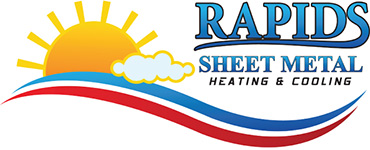
A well-designed HVAC system is vital for a comfortable and energy-efficient home, but it’s also a big investment. You deserve the most effective comfort solutions available, which is why HVAC rebates are so important. They can help ensure high-efficiency furnaces, air conditioners and other equipment is more budget friendly.
HVAC efficiency standards are increasing next year, so now’s an ideal time to explore your options. A variety of companies, organizations and even government entities are promoting rebates in 2023 to help everyone acquire a new, high-efficiency HVAC system.
Receive a Tax Rebate by Installing a High Efficiency Furnace
Numerous manufacturers of high-efficiency furnaces provide rebates toward buying a new system. These furnaces include energy-efficient components such as variable-speed blower motors, which enable the thermostat to refine how much heating is released. It’s an easy way to reduce energy use overall. Local utilities also provide furnace rebates because less energy use translates to less strain on the local energy grid.
The government’s ENERGY STAR® program is also recommended for obtaining a furnace rebate. You can submit your ZIP Code to learn which rebates you may be approved for. Equipment with the ENERGY STAR® rating means it satisfies your region’s standards for energy-efficient comfort.
Rebates for Air Conditioning Systems
Many of the same rebates for high-efficiency furnaces are also applicable to air conditioners. You can save hundreds on new installation for equipment from a leading brand like Lennox. Just consult your local utility companies to find out which makes and models are eligible. Additionally, you can usually bundle federal and local rebates for even greater savings. Don’t hesitate to find out what's all available, because it can easily add up to 10% of a new, high-efficiency cooling system
2023's Rebates for Smart Thermostats
A smart thermostat is an incredibly valuable improvement to your home comfort system. With intelligent programming, you can optimize the daily schedule. Utility companies highly value this kind of efficiency, and so most provide rebate programs for new smart thermostats. Over time, these rebates virtually enable you to get a free smart thermostat!
Your utility companies also provide programs where they swap discounted rates for the capability to access your thermostat during peak energy use. This helps reduce strain on the grid, especially when heat waves or cold fronts come through. When registered in this program, your thermostat may automatically be adjusted by a few degrees.
Additional Cost-Saving Options: High Efficiency Products and Home Improvement Credits
A little different than rebates, tax credits are also promoted for the purchase and installation of energy-efficient HVAC systems. For example, the Inflation Reduction Act reactivated a program in 2021 that supplied credits for up to 10% of the project’s cost. The revised credits are now worth 30% of the cost and may be claimed every year as opposed to only once. These credits are eligible for a much greater variety of projects, including home energy audits, electrical, insulation, ventilation, and even your doors and windows! The programs are tailored to offer the most benefits for lower-income households, maximizing the improvements to HVAC efficiency all over the country.
New Legislation for Heat Pump Rebates
The recently passed Inflation Reduction Act included separate legislation known as the High-Efficiency Electric Homes and Rebates Act, or HEEHRA. This incentive is specially geared toward heat pump technology, which transfers heat instead of creating it by burning fuel. To persuade more people to transition to this energy-efficient comfort system, these rebates are considerably higher versus incentives for AC systems and furnaces.
If a household’s income is below 80% of the local median, you are able to use the rebates to cover 100% of the costs of a new heat pump. Households meeting 80-150% of the typical income can take care of 50% of equipment and installation costs.
